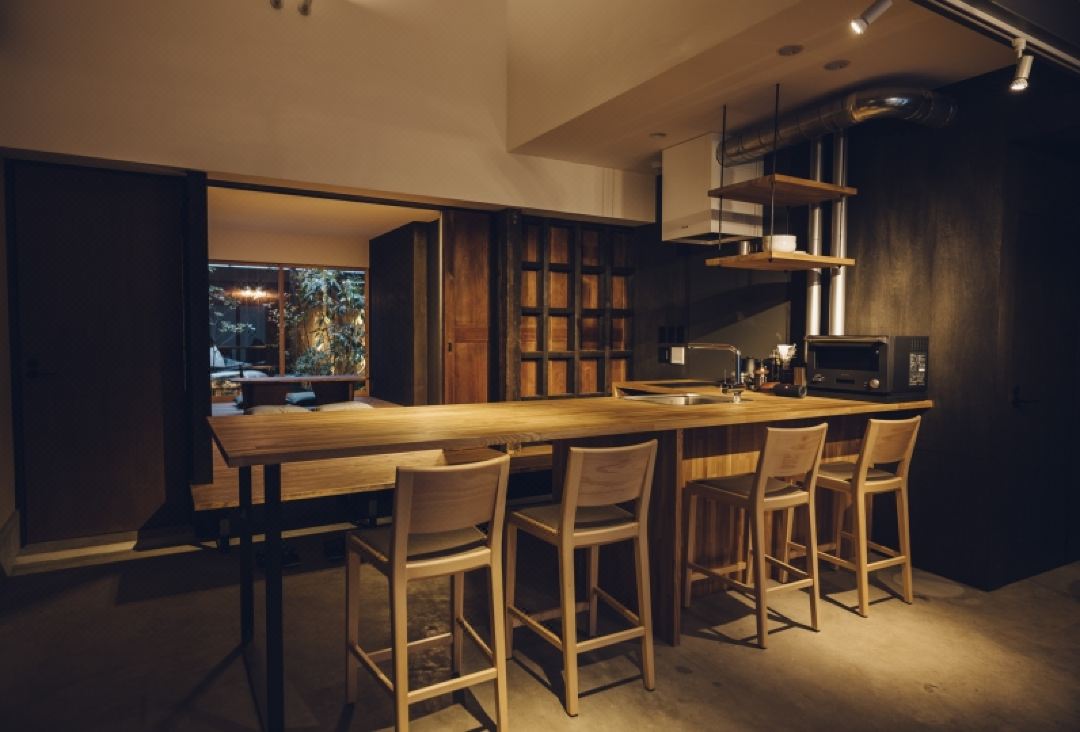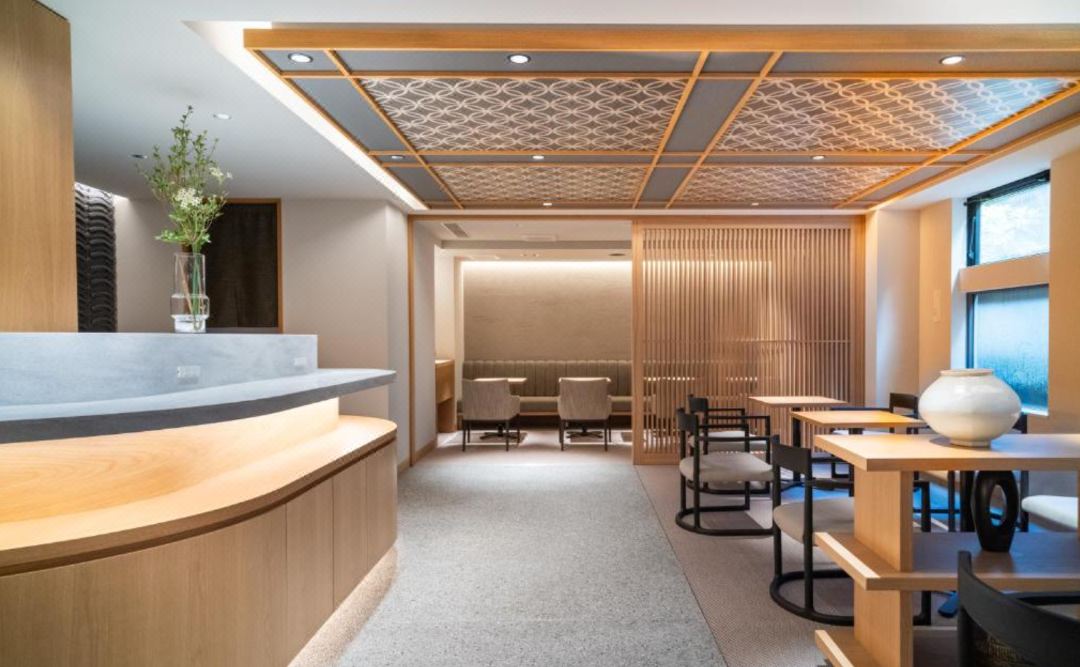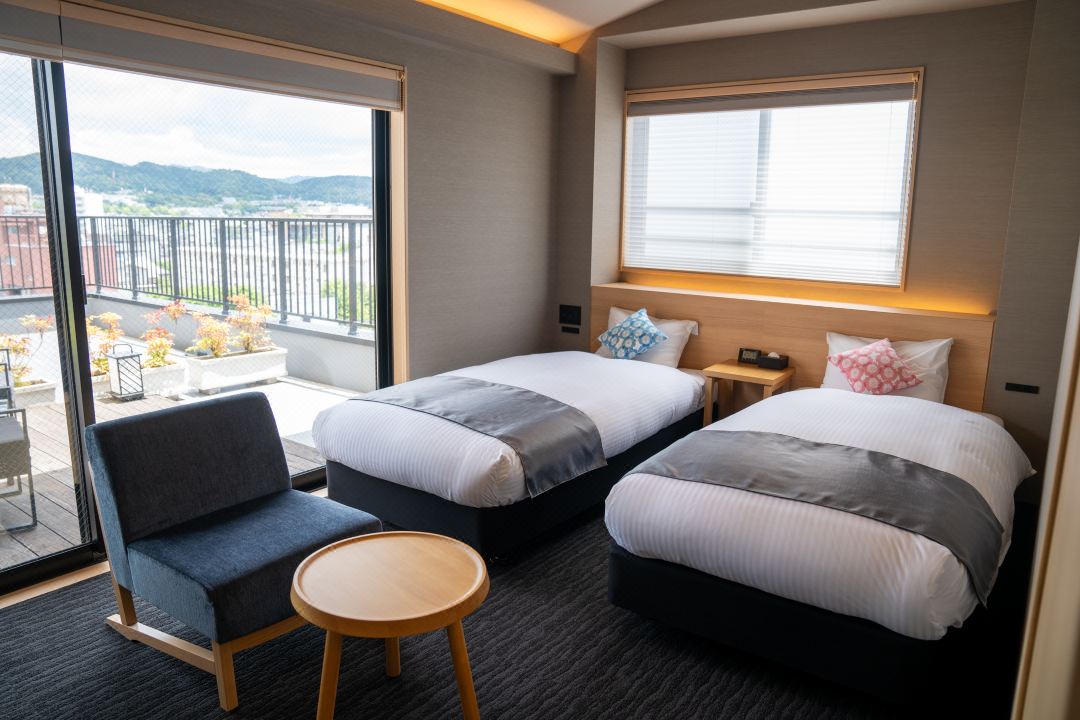Okazaki is a treasure trove of attractive Japanese and Western architecture. Architectural Tour: Famous French Architects

An architectural tour by architects for architects: surprises everywhere! Heian Shrine, ROHM Theater Kyoto, Murinan, Kyoto City Kyocera Museum of Art Course
Hello everyone! This is Hirose, CEC ambassador! I would like to tell you about the contents and impressions about the tour I took at CEC!
This time, we provided a special tour to introduce the charm of Kyoto's architecture to Philippe Chambaletta, who is highly rated in the French architectural world.
During the tour, in response to Mr. Chambaretta's request, we visited historical and modern buildings in Kyoto.
Architect: Who is Philippe Chiambaretta?
Philippe Chiambaretta is a world-famous architect based in France. After studying architecture at the École nationale des ponts et chaussées (France) and the Massachusetts Institute of Technology in Boston, he headed the international department of the Ricardo Bofill architectural firm in Paris. After graduating from the Paris-Belleville School of Architecture, he founded the architectural firm PCA-STREAM. Currently, with over 100 talented members who are experts in various fields of architecture, we are producing many architectural works that respond to the problems of modern society. ”
PCA-STREAM: https://www.pca-stream.com/en/
Japan-France: Tour by architects for architects
Mr. Naotake Maeda, director, curator, and first-class architect of the Kyoto City Kyocera Museum of Art, conducted a detailed private tour of modern buildings and gardens in Kyoto. Mr. Maeda has been involved in many successful architecture exhibitions, including ``Japan Architecture Exhibition'' and ``Modern Architecture Kyoto'' .
During his trip, Philip was able to see various buildings on his own, but on the tour, he wanted to not only see things, but also make new discoveries, starting with Heian Shrine, then visiting ROHM Theater Kyoto and Murin-an. , we have set up a course called Kyoto City Kyocera Museum of Art. I, Hirose, provided consecutive interpretation.

Chuta Ito: The white sand of the Heian Shrine garden also influenced French architecture.
After having a delicious breakfast at the Heian Shrine Hall, we joined Mr. Chambaletta who was taking a walk in the beautiful garden, and first Mr. Maeda explained about the history of Heian Shrine.
According to Maeda, the white sand in the garden of Japanese architecture represents the thin, spreading water.
In response to this, Mr. Chambaretta expressed his admiration, saying, ``There is a building in France that is modeled after this.''
Mr. Chambaretta was also surprised to learn that the designer, Chuta Ito , designed such a magnificent building while he was a graduate student.

ROHM Theater Kyoto: Kunio Maekawa inherits Le Corbusier's genes
Our next destination was ROHM Theater Kyoto . This building was designed by Kunio Maekawa , one of Japan's leading architects.He learned from the famous French architect Le Corbusier, who has many fans in Japan, and elements of Le Corbusier's architecture are incorporated throughout the Rohm Theater. It's appearing.
The countless pillars are one of the features that utilize Le Corbusier's piloti technique to create a spacious space.
Mr. Chambaretta shared an interesting anecdote regarding this "Piloti".
Picasso was friends with Corbusier, and when they had dinner together and had too much to drink, he urinated on the pillar supporting the piloti, claiming, ``That's what the pilotis are for.''
Mr. Maeda further explained about the architecture. The handrails of the ROHM Theater were created with the image of Japanese wooden architecture, and the ends of the handrails are said to be reminiscent of the "bull's horns" imitating the works of Le Corbusier. I can only imagine if he respected Corbusier.
Mr. Chambaretta, who is also a French architect, said that he was deeply moved by the collaboration between Kunio Maekawa and Le Corbusier, and the building where Japanese and Western styles overlap , and the wonderful architecture that was a fusion of Japanese and French culture. Ta.

Murin-an: The surprising secret hidden in Jihei Ogawa's garden
I arrived at Murin-an about 5 minutes walk from ROHM Theater Kyoto.
Murin-an is the residence where Aritomo Yamagata, one of the three leading figures of the Meiji Restoration, lived.
In the tea room, we heard an interesting story from Mr. Maeda about Aritomo Yamagata, the owner of this mansion. Aritomo Yamagata was unusual for a politician at the time, and apparently did not have much interest in the tea ceremony. Instead, he had a deep knowledge of landscaping, entertained guests in the garden he had built, and talked about politics.
The garden was created by the gardener Jihei Ogawa , who is considered a pioneer of modern Japanese gardens, and Ciambaletta was impressed by Jihei Ogawa's method of using Higashiyama as a borrowed landscape.
Here is a quiz from Mr. Maeda! "Where do you think the water in this stream comes from?"
A stream runs through the garden, but it has a surprising secret. Mr. Chambaretta replied, "Maybe it's circulated by a motor and a pump?"
The answer is! ``The water in this stream comes from Lake Biwa Canal, and it is brought from Shiga Prefecture through a tunnel! Can you believe it?'' The sound and sight of water flowing naturally is very soothing to watch. I did.

The architecture of the Kyocera Museum of Art is a perfect blend of old and new.
Finally, we headed to the Kyoto City Kyocera Museum of Art, where Mr. Maeda works.
The architecture of this museum is a fusion of Japanese and Western architecture called the Imperial Crown Style, which was originally designed by Kenjiro Maeda.
When viewed from a distance, it looks Japanese-style due to its copper plate roof, but as you approach it, the roof becomes invisible due to the lack of the deep eaves characteristic of Japanese architecture, making it a mysterious building that looks Western-style .
Mr. Chambaretta was fascinated by the uniqueness of this architecture.
In fact, this architecture is said to have been influenced by the former Imperial Hotel Wright Building (currently relocated to Meiji Village) designed by Frank Lloyd Wright , and Chambaretta says, ``There are similarities with the former Imperial Hotel. "Yes," he said.
The museum's renovation and new wing are modern architecture under the design supervision of Jun Aoki and Tetsuo Nishizawa, who are responsible for Louis Vuitton stores in Japan.
Mr. Chambaretta was impressed by the architecture, which perfectly harmonized old and new.

At the end of the tour, Mr. Chambaretta complimented us and said, ``It was a very fun and educational tour that gave us a good understanding of the charm of Kyoto's architecture.''
Mr. Chambaretta, please come to Kyoto again.
Thank you very much, Maeda-san!

CEC Ambassador : Ryo Hirose University: Doshisha University Faculty: Faculty of Law Birthplace: Dubai
Special Thanks: Naotake Maeda, First Class Architect/Curator. Director of Planning and Promotion, Kyocera Museum of Art, Kyoto City. Kyoto Modern Architecture Festival executive committee member.
Hotels near Heian Shrine
Hotels near Kyoto City KYOCERA Museum of Art
Our "ambassadors" will guide you through Kyoto's cultural tourism in a variety of languages, drawing on their own experiences and knowledge. We can accommodate requests for standard courses or special, bespoke one-day courses, to help you create unforgettable days in Kyoto, providing you with the opportunity to learn about and experience shrines, temples, and gardens, modern architecture, food culture, traditional performing arts, and more, as well as meet the local encounters that will create the best memories. In addition to guided tours, we offer special experiences, from events utilizing unique venues to plans that allow you to fully enjoy Kyoto culture throughout the seasons.
The contents on this page may partially contain automatic translation.







































![[2026] Top 5 Strawberry Picking Spots in Tokushima, Naruto| Farms and Access Guide for January to May](https://resources.matcha-jp.com/resize/720x2000/2025/03/06-227165.webp)
![[Yamanashi/ Hokuto City] 4 Hot New Spots Opening in 2026](https://resources.matcha-jp.com/resize/720x2000/2025/12/12-252747.webp)


